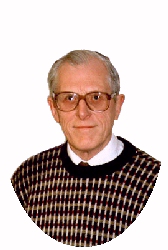
An unpleasant shock awaited the team on its arrival on the Al Jafr desert in Autumn 1996. The surface was hard and (apart from a few Bedouin tracks) flat. The problem was that the surface was littered with stones. Millions of them. We were immediately concerned that impact between the stones and our aluminium wheels travelling at several hundred miles per hour would result in damage to the wheels. The wheels already have an exceptionally tough job to do. When the car is travelling at its design maximum speed of 850 mph the wheels are rotating at 8500 rpm, and the radial acceleration (centrifugal force) at the rim of each wheel is 35,000 times the force of gravity. Most wheels would explode under these loads, but Glynne Bowsher has conducted a detailed computer study to minimise the stresses. The resulting wheels, made by Dunlop Aviation, are forged from a very high specification aluminium alloy which has been heat treated and shot peened to further improve its mechanical properties. Each wheel was then carefully balanced and spun up to 9500 rpm. This subjected the wheels to a load that was 25% more than would occur at maximum operating speed, and no damage was caused.
That inspires confidence, as long as the wheel is undamaged. But what if stones gouged the surface - causing stress concentrations which could substantially weaken the wheel? And there was another worry. When the car starts moving forward, the engines are sucking air through the intakes. There would be a serious risk of sucking stones from the surface that would damage the compressor blades and turbine blades. As the car speeds up, air is rammed into the intakes by the forward speed, so the problem of sucking stones into the engines is localised to the first half-mile of each run.
There was only one thing to do. Pick up all of the stones! This backbreaking and (in the desert sun) exhausting activity is called defodding (derived from the RAF acronym for Foreign Object Damage). With 17 tracks, each 10 miles long and 50 feet wide, this was a monumental task. It is equivalent to picking up every stone, piece of grit and piece of rubbish on the 170 miles from London to Exeter. All of the team joined in, helped by Mach 1 Club members and by Journalists who were blackmailed by the threat that they may not be granted an interview if they did not pick up stones.
Back at Farnborough we had time to consider the situation. Defodding is a major problem. It saps our energy and undoubtedly adds to the team size needed to test the car. This year it would be worse, as in June the temperature could exceed 40C at AL Jafr.. It posed the question - would the stones really damage the wheels, or could we dispense with the defodding chore? There was one small piece of evidence giving cause for optimism. Despite our careful attempts to remove every stone, inevitably we left a few embedded in the surface and not visible. Checking the tracks of SSC after each run we found two cases where stones had been hit by a wheel at speed. In each case the stone had been shattered. Careful study of the wheel surfaces showed no sign of damage. Could we trust this evidence? The trouble is that stones are extremely variable in their composition and hardness so we would need to test a statistically large number before being confident. A score of 2-0 to the wheels was not good enough. How could we get more evidence?
The computational fluid dynamics study of flow around ThrustSSC was carried out by CDR Ltd, associated with the Civil Engineering Department of the University of Wales at Swansea. Civil Engineering - that sounded promising. That was a discipline that required knowledge of both stones and metals. So Glynne Bowsher and I went to Swansea armed with a large bag of stones from Al Jafr, and samples of the aluminium alloy which had been heat treated to the same state as the wheels. We learned much by discussion with metallurgists and geologists. In particular we learned that, despite the variable appearance of the stones, nearly all of them were limestone. The differences in appearance were caused by weathering.
The theoretical information we obtained was very helpful, but the real evidence we needed was experimental. Dr Hassan from the University loaded one our metal samples into a press, together with a viciously pointed stone, and load was applied. The stone obligingly crumbled, leaving the aluminium sample undamaged. We repeated this test innumerable times, adjusting the means of supporting the stones, the speed of application of the load, and anything else that may influence the result. We even crushed the stones to dust, applying loads of up to 20 tons in the process. Always we got the same result, that the stones would do no more than mark the wheel surface but would not dig in to it. Eureka! We would still need to walk the tracks looking for metal, and we would in any case pick up large stones lying on the surface. We must still clear the stones near the start of each run for the benefit of the engines. But the big saving was that we could now allow ThrustSSC to drive at speed over the large areas with small stones embedded in the desert surface. This would reduce the defodding problem by about 80%. Glynne and I suddenly became very popular with the rest of the team when we returned from Swansea with the news!
Ron Ayers, June 1997
 |
 |
 |
||
| Sponsored by | This site best viewed with Microsoft Internet Explorer 3 | |||